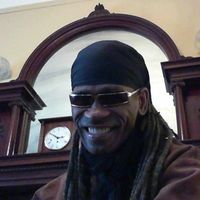Search the Community
Showing results for tags 'socalledjazz'.
-
The Great African-American Classical Art-Form [Playlist] 58 Tracks 5 Hours https://open.spotify.com/user/121809214/playlist/67E2cildyR5tdjY5NWlUg3 Brother Dr. Yusef Lateef There is a lot of conversation these days about experimental music. But despite mentioning the more obvious names, such as John Coltrane or Sun Ra, there is a basic lack of understanding that of so-called jazz from Armstrong to Osby is seat-of-the-pants experimental music, a white-knuckle ride of expressionism for musician and audience alike. Since the late 20s New York has been the town where a so-called jazz musician must go to make it. It is the premier urban landscape in the world, dominated by its skyscrapers and its legends. Even without its music, it has an aura. It is a city on the cutting edge, be it Duke Ellington at The Cotton Club, Sonny Rollins blowing on The Williamsburg Bridge or Ornette Coleman in 1959 @ The Five Spot. It is the town where the likes of Parker and Gillespie worked through the changes that would create the Be-bop idiom, that revolutionized modern music at the legendary Minton's Playhouse. It was in New York, that Billie Holiday debuted Strange Fruit at the nation's first multi-racial venue, Cafe Society. Rashid Booker "The Jazz Aficionado" Keeping The Idiom Alive Hey! Thanks for stopping by, please like our page and share the content. The Most Influential African-American Cultural Network in the Universe! https://www.facebook.com/keepingtheidiomalive/ Keeping The Idiom Alive Rashid Booker Harlem USA 125th St
- 1 reply
-
- africanamericanclassicalartform
- socalledjazz
-
(and 2 more)
Tagged with:
-
The Great African-American Classical Art-Form John Coltrane [Playlist] https://open.spotify.com/user/121809214/playlist/0ajpP4rBTuOyHISyHIxz5e Curtis Fuller & John Coltrane at Coltrane's "Blue Train" session of September 15. 1957 at the Van Gelder Studio, Hackensack, New Jersey. Image Credit Mosaic Images. John William Coltrane, also known as "Trane" (September 23, 1926 – July 17, 1967), was an African-American saxophonist-composer. Working in the bebop and hard bop idioms early in his career, Coltrane helped pioneer the use of modes in so-called jazz and was later at the forefront of the so-called free jazz idiom. He led at least fifty recording sessions during his career and appeared as a sideman on many sessions by other musicians, including trumpeter-composer Miles Davis and pianist-composer Thelonious Monk. Coltrane is not nearly as popular a figure in African American poetry as he was in the 1960s, although he still is written about often. And he is certainly revered, although black intellectuals and writers tend to revere all dead black so-called jazz artists. Coltrane, though, is a bit more revered than most. Probably only Billie Holiday generates as much sentimentality as Coltrane. It will be interesting to see how newer generations of black writers will perceive Coltrane and the tradition of writing about him that came of age in the 1960s, how they make use of that tradition. Coltrane is certainly likely to remain a subject as long as his music endures. And the persistence of his music seems very likely. The Black Perspective in Music, the primary purpose of The Black Perspective in Music is to provide an opportunity for the free expression of ideas and opinions by persons interested in the African-American and African performing arts, particularly from the creative point of view. Regular features include articles by musicologists, ethnomusicologists, historians, composers, and performing artists; interviews with well-known personalities in the arts; listings of new books, music, musicals, films, and recordings; announcements of special events (festivals, conferences, premiere performances, symposia), and periodic surveys of bibliographic materials. The Black Perspective in Music was published by the Foundation for Research in the African-American Creative Arts. Early, Gerald. "Ode to John Coltrane: A Jazz Musician's Influence on African American Culture." The Antioch Review 57.3 (1999): 371-85. Web. Subjects: African American Studies, Area Studies, Music, Arts — Rashid Booker Keeping The Idiom Alive Harlem USA 125th St Hey! Thanks for stopping by, please like our page and share the content. The Most Influential African-American Cultural Network in the Universe!https://www.facebook.com/keepingtheidiomalive/photos/a.855915101129032.1073741841.584459258274619/1035400639847143/?type=3&theater
- 15 replies
-
- africanamericanclassicalartform
- socalledjazz
-
(and 3 more)
Tagged with:
-
The Great African-American Classical Art-Form An interview with the great Jimmy Cobb https://www.facebook.com/keepingtheidiomalive/photos/rpd.100002234540944/1052537581466782/?type=3&theater The Great Jimmy Cobb's most famous work is on Miles Davis' Kind of Blue (1959), considered by many to be the quintessential jazz record. Cobb is the last surviving player from the session. Legendary jazz drummer, Jimmy Cobb, was born in Washington, D.C. on January 20, 1929. A superb, mostly self-taught musician, Jimmy is the elder statesman of all the incredible Miles Davis bands. Jimmy’s inspirational work with Miles, John Coltrane, Cannonball Adderly and Co. spanned 1957 until 1963 and included the masterpiece "Kind of Blue", the most popular jazz recording in history. He also played on "Sketches of Spain", Someday My Prince will Come", "Live at Carnegie Hall, "Live at the Blackhawk", "Porgy and Bess", and many, many other watermarks Miles Davis recordings. At 87 Jimmy is still going strong teaching and performing. Set back and enjoy the journey with Jimmy Cobb. A special thanks go out to Rashid Booker for making it happen. Peace Hey! Thanks for stopping by, please like our page and share the content. The Most Influential African-American Cultural Network in the Universe! Keeping The Idiom Alive Rashid Booker Harlem USA 125th St
-
- aficnamericanclassicalartform
- socalledjazz
-
(and 5 more)
Tagged with:
_forumlogo.png.a607ef20a6e0c299ab2aa6443aa1f32e.png)
